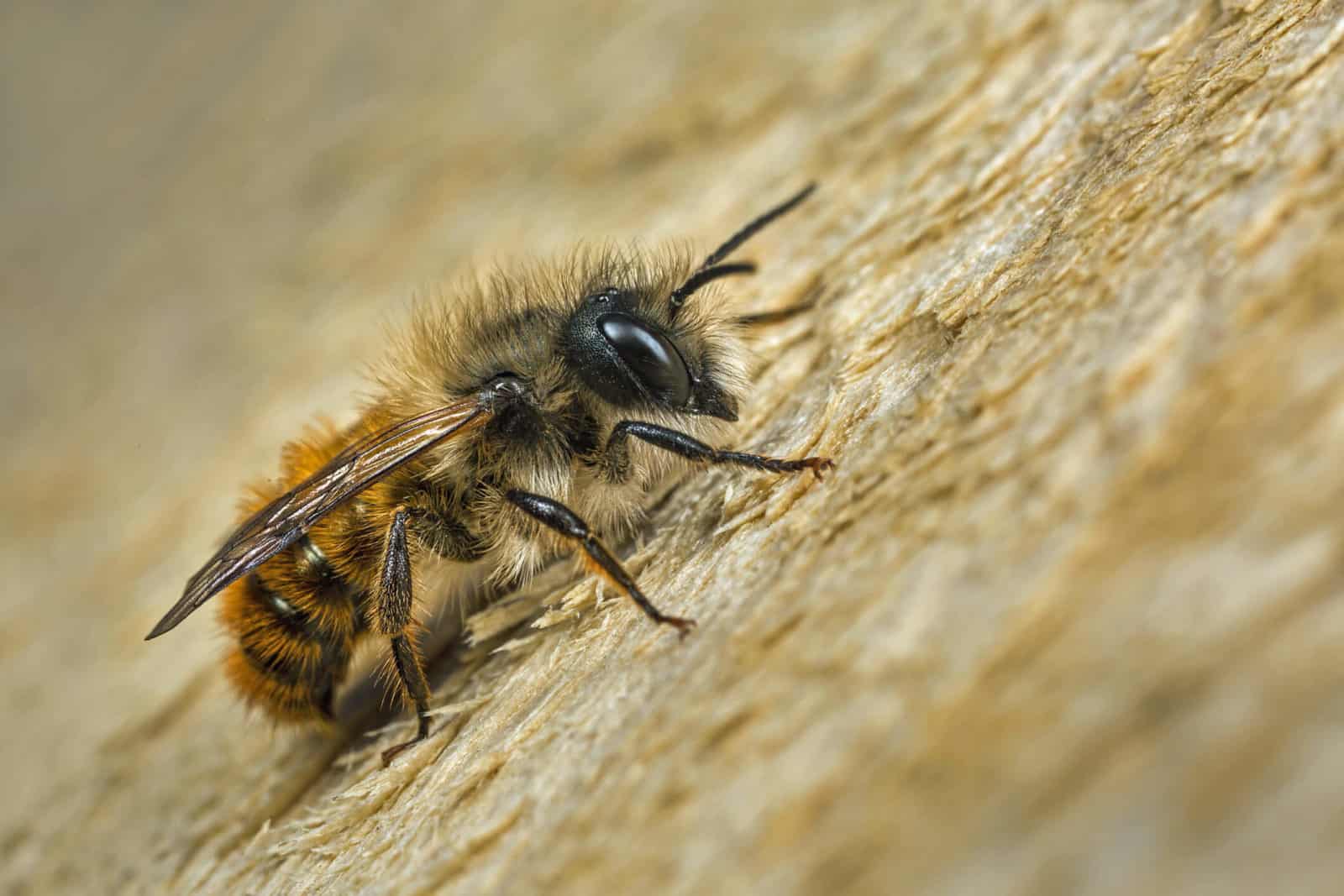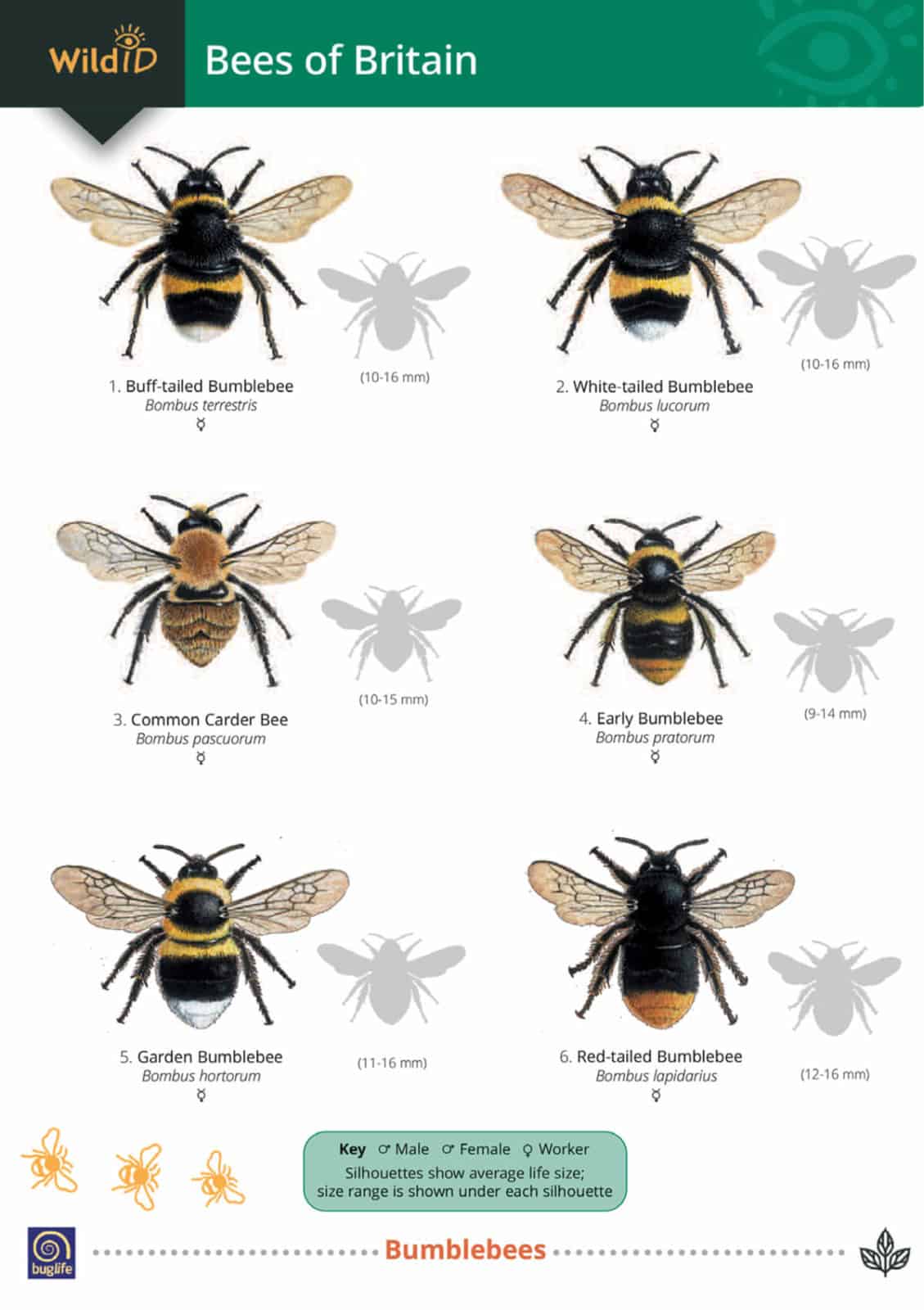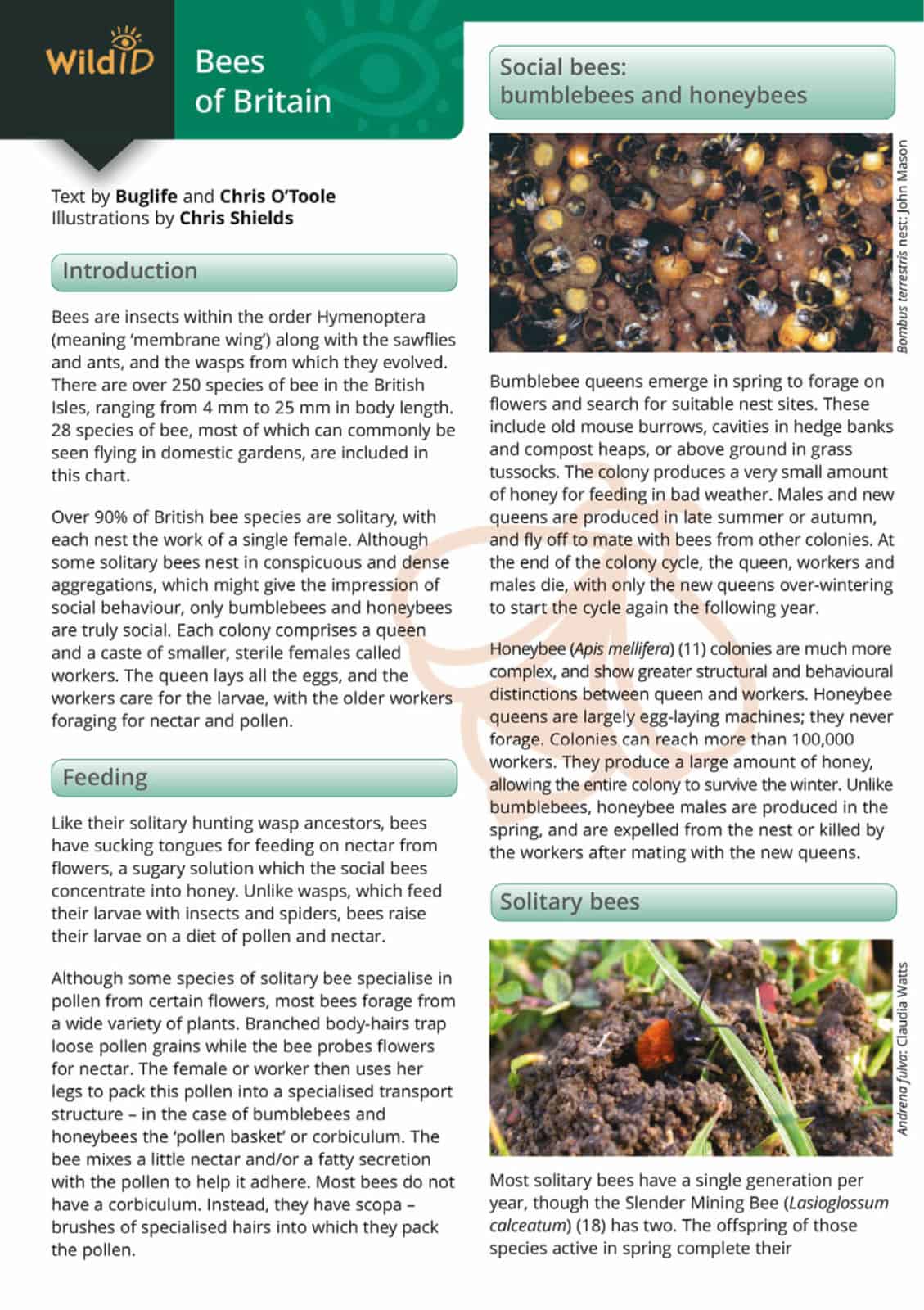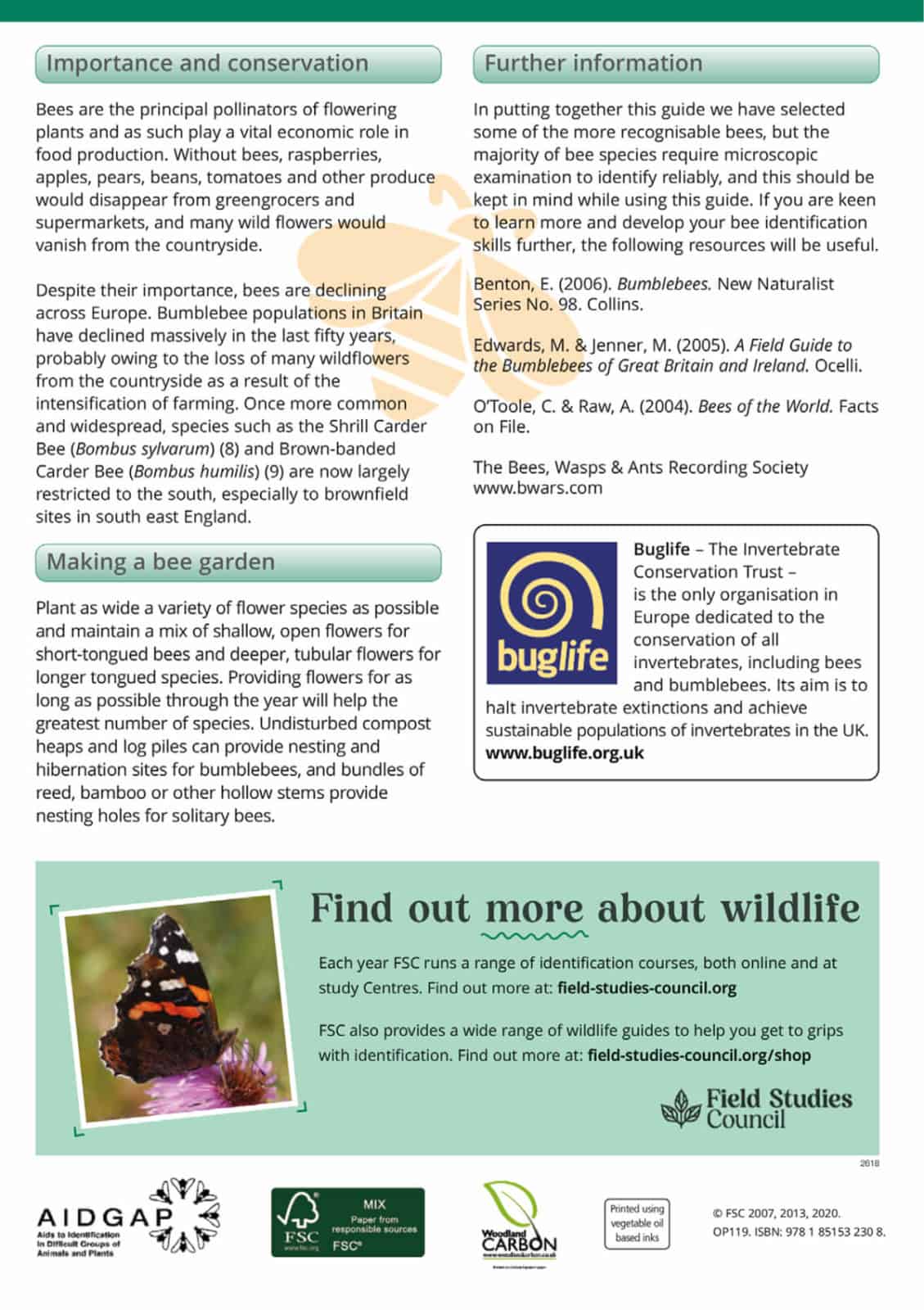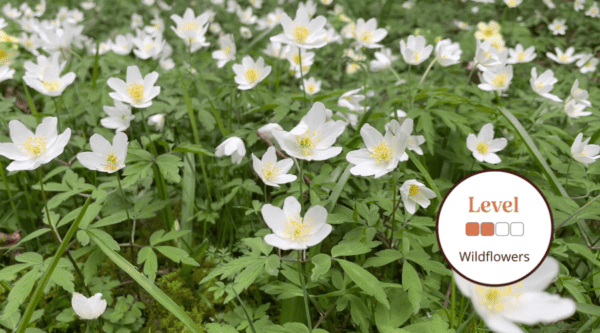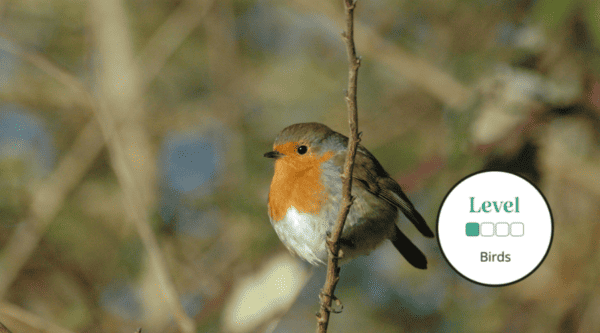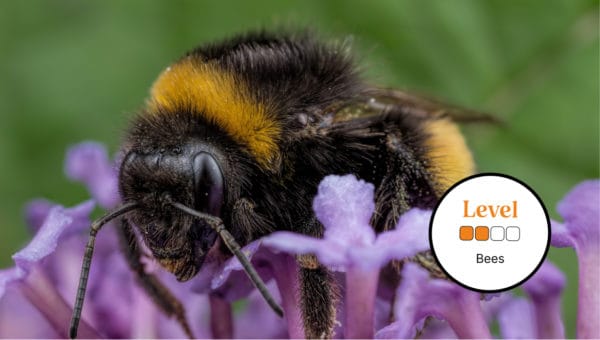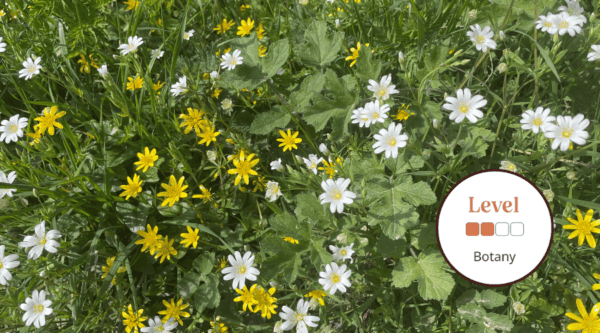Our Bee Guide is a colourful and informative fold-out bee identification chart, featuring 28 species of bees found in gardens in Britain and Ireland. As well as the ‘Big Six’ bumblebees, the bee field guide includes mining bees, cavity-nesting bees and cuckoo bees.
Beautiful colour paintings by wildlife artist and illustrator Chris Shields highlight what to look for when identifying British bees. Plus the silhouettes next to each image show typical life size for each species.
Our Bee identification chart consists of 8 fold-out pages featuring full-colour illustrations, making the identification of bees much easier to follow. The reverse side includes concise identification notes for each species. This text covers key characters to look out for, plus flight period, habitat and range. Also included in this bee field guide are useful pointers to help distinguish between similar-looking species.
Did you know that there are over 250 species of bees in Britain and Ireland? Bumblebees and honeybees are social bees, living in in colonies. But 90% of British species are solitary, with each nest the work of a single female. Mining bees excavate nest tunnels and cells in the ground. Cavity-nesting bees (including mason bees and leafcutters) use pre-existing cavities such as hollow plant stems, or a bee hotel. Cuckoo bees have a similar nesting strategy to the cuckoo bird. A female cuckoo bee will seek out the nest of another bee to lay her eggs. The Sharp-tailed Bee is a cuckoo bee frequent in gardens.
You can easily increase the number of bee species in your garden. Plant a mix of shallow open flowers for short-tongued bees and deeper tubular flowers for long-tongued species. Providing flowers for as long as possible through the year from early spring to late autumn will help the greatest number of bees. Undisturbed compost heaps and log piles are useful nesting and hibernation sites for bumblebees.
Our popular wildlife field guides measure 24.5cmx17.5cm and are extremely lightweight so are the perfect identification aid for popping in your bag when heading outside. All wildlife identification guides are laminated, meaning they are showerproof for use outside. and can be wiped clean.
The Field Studies Council guide to British bees was co-created with Buglife.

